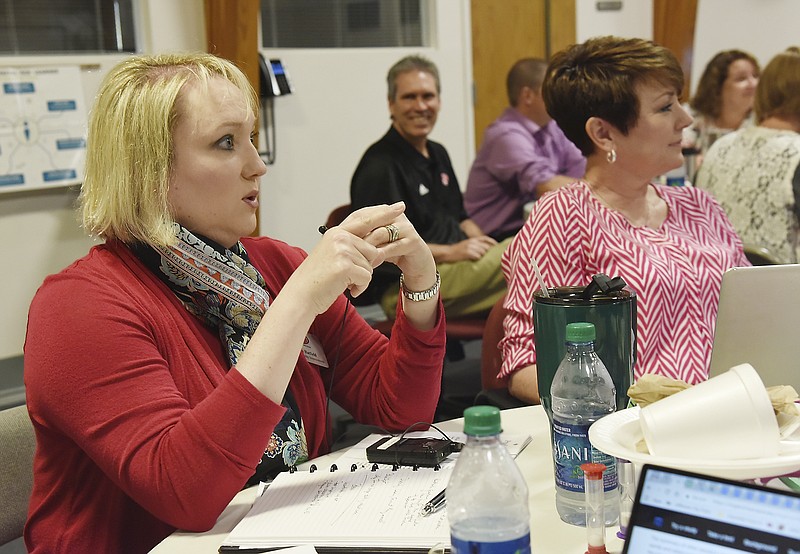Findings from the Jefferson City School District facility focus group show two fifth- and sixth-grade buildings could solve K-8 space needs.
Chief Finance and Operations Officer Jason Hoffman and Director of Quality Improvement Brenda Hatfield presented an update of findings at Monday's board meeting.
No formal recommendation has been made but the 18-member group considers the fifth- and sixth-grade building plan the most favored after surveying teachers, parents and students.
The results of those findings focused on addressing transition issues and the district's overcrowding.
Since the district eliminated Simonsen Ninth Grade Center, students switch buildings at kindergarten, sixth grade and eighth grade.
The two new buildings would mean transitions at kindergarten, fourth grade, sixth grade and eighth grade - presenting more positives than negatives, according to the presented findings.
Some positives include consistent class sizes of about 20 students, creating space in elementary and middle school buildings, reducing lunch shifts, enhanced security by eliminating trailers and no land acquisition cost.
Some negatives included transitioning students at an earlier age, adding administration and support staff, longer bus rides, additional operating expenses and adding a building for parents with students in different grades.
A study by ACI Boland Architects in May showed the district's elementary and middle schools were filled at or beyond capacity.
To maximize the current spaces, some schools are using closets, hallways or other unique spaces for counseling, behavior support, speech therapy and more services. Common spaces at Lewis and Clark Elementary were converted into classrooms this year, Hatfield said.
By the 2020-21 school year, additional trailers will be needed for ancillary services at Lawson, Moreau Heights and North Elementary.
Board member Stephanie Johnson spoke in favor of the change to give more space to students and services.
"It breaks my heart that some of the services our kids need the most are done in hallways and closets and trailers," Johnson said.
Space issues are not related to a sudden increase in students, Hoffman said. The district has struggled with this for years.
"It's a similar thing that happened at the high school," Hoffman said. "It's not that we're growing at a tremendous rate. We've just been out of space for a long time and our student's needs have changed a lot."
The district would build on land owned near Thomas Jefferson and Lewis and Clark Middle School, Hoffman said.
If voters approve the no tax increase option in April 2020, schools could open the fall of 2022.
The focus group also considered building two more elementary schools, adding a third middle school and adding K-1 grade buildings. Adding more than two grade levels could not be done without a tax increase.
In other news Monday, Massman and board of education treasurer Scott Hovis announced intentions to run for re-election in April 2020.
In October, board member Steve Bruce announced he would not seek re-election. Candidate filing opens Dec. 17 and ends Jan. 21.

